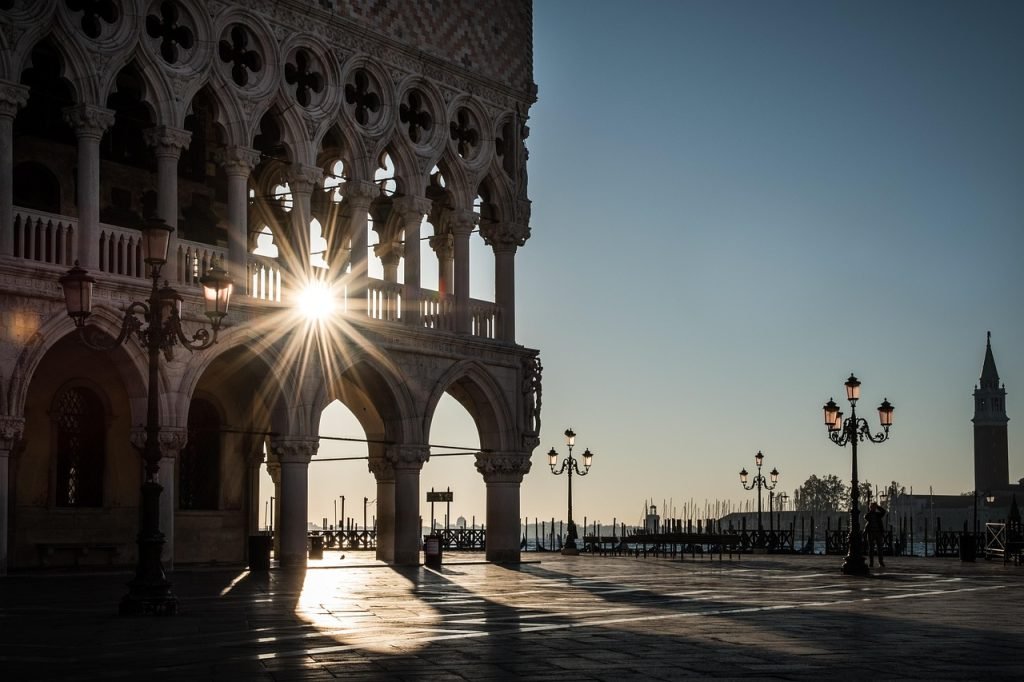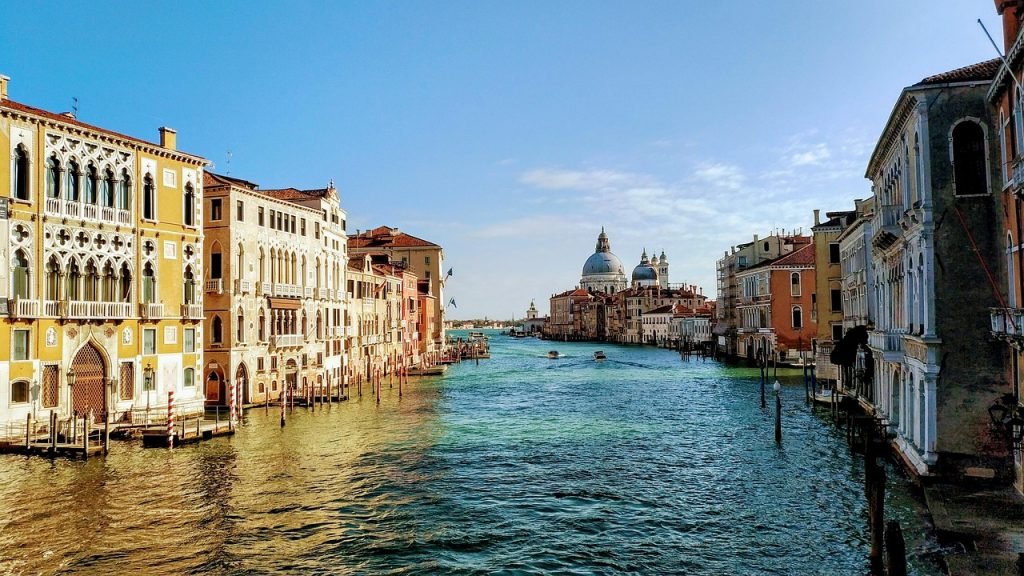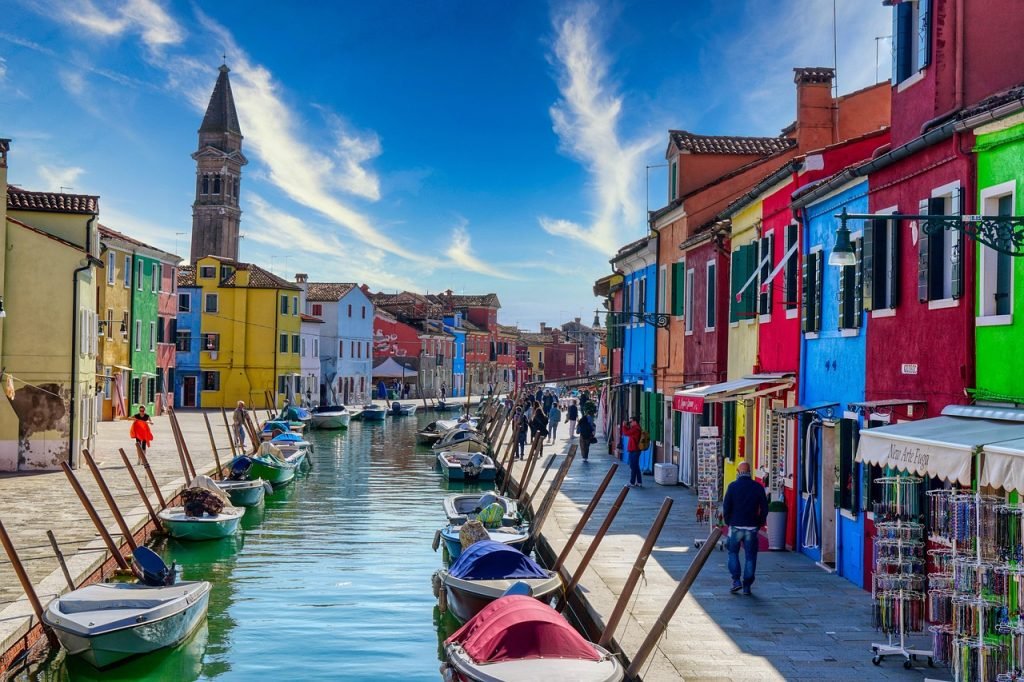After ten years working near Venice and conducting over five bacaro tours annually, I can tell you that to truly understand Venice, you must understand its bacari. These aren’t just bars or restaurants – they’re living, breathing temples to a way of life that has endured for centuries, weathering storms, floods, and even the relentless tide of tourism that threatens to wash away our most precious traditions.
What Makes a Bacaro Truly Venetian
The word “bacaro” itself comes from Bacchus, the Roman god of wine, but don’t let that fool you into thinking these are rowdy taverns. A true bacaro is an intimate space, often so small you could touch both walls with outstretched arms. The floors are typically worn Istrian stone or traditional Venetian terrazzo, polished smooth by generations of locals shuffling in for their daily ritual. The walls bear the patina of decades – sometimes centuries – of cigarette smoke, laughter, and the gentle condensation that rises from countless ombre and spritz.
Walking into Al Bottegon – my absolute favorite bacaro – is like stepping into my nonno’s kitchen. Located in Dorsoduro at number 992, this gem has been serving locals since the early 1900s. The moment you push through that weathered door, you’re enveloped by the intoxicating aroma of baccalà mantecato, and the gentle murmur of Venetian dialect. The proprietors know your name, your usual order too.
The Sacred Ritual of Cichetti and Ombra
Foreigners often mistake cichetti for Italian tapas, but this comparison makes my soul weep a little. Cichetti are so much more – they’re edible poetry, tiny masterpieces that tell the story of our lagoon, our trade routes, our very identity. Each piece should fit perfectly in your mouth in one or two bites, creating a symphony of flavors that speaks to centuries of Venetian culinary wisdom.
At Al Bottegon, they serve countless types of cichetti and each one is a revelation. The baccalà mantecato, whipped to perfection with olive oil until it becomes a cloud of oceanic silk, spread on a crostino that yields with just the right amount of resistance. The polpette, each one hand-rolled that morning, carrying within them the essence of nutmeg and parmesan that has defined Venetian comfort food for generations. The sarde in saor, where sweet onions dance with the sharp bite of vinegar and the exotic whisper of pine nuts – a dish that tells the tale of our merchants who once ruled the Mediterranean.
And then there’s the ombra – that small glass of wine that gets its name from the shadow of the Campanile in San Marco, where wine vendors once moved their stalls to keep their precious cargo cool. An ombra isn’t just a drink; it’s a pause, a moment of connection, a bridge between the morning’s work and the evening’s rest. The glass should be small enough to warm in your palm, the wine local enough to taste the very stones of the Veneto hills.
The Unwritten Rules Every Local Knows
After a decade of bacaro-hopping, I’ve learned that these spaces operate on an unspoken code that tourists often miss entirely. You don’t sit down – these aren’t restaurants, they’re gathering places where you stand, lean against the ancient bar, and become part of the living tableau. You don’t rush your ombra – time moves differently inside a bacaro, flowing like the tides that shape our city.
When you enter, you greet everyone with a gentle “salve” – not the touristy “ciao” but the traditional Venetian greeting that acknowledges you’re entering a community space. You don’t point at the cichetti behind the glass; you ask the bartender what’s good today, because they know which batch of baccalà was prepared that morning and which polpette are still warm from the kitchen.
Most importantly, a proper Venetian spritz is made with still white wine – usually a local variety – mixed with Aperol or Select (the latter being the true Venetian choice), topped with a splash of soda water and garnished with an olive. The massive, ice-filled cocktails served in tourist areas are an abomination.
The Social Architecture of Bacaro Life
What many visitors don’t understand is that bacari serve as the social nervous system of Venice. These aren’t just places to eat and drink – they’re information exchanges, community centers, and democratic forums where a gondolier can debate politics with a professor, where fishermen share the morning’s catch with shopkeepers, where the city’s soul reveals itself in all its complexity.
During my years conducting tours, I’ve watched tourists photograph the picturesque decay of the city while completely missing the vibrant life happening inside these humble establishments. They see crumbling palazzi and romantic canals, but they don’t see the barista at Cantina dei do Mori – the oldest bacaro in Venice – carefully preparing his famous “francobolli,” those tiny tramezzini that Casanova himself once savored.
At Al Timon, another beloved spot, you can sit on boats moored along the canal, watching the city’s daily theater unfold while savoring perfectly prepared cicchetti. The tourists come for the novelty, but locals come for the continuity – the reassuring knowledge that some things in our ever-changing city remain beautifully, stubbornly constant.
The Art of the Bacaro Tour
A proper bacaro tour isn’t about getting drunk – it’s about experiencing the rhythm of Venetian life. You start early, perhaps around 11 AM, when the morning light filters through the calli and the first batch of cichetti emerges from tiny kitchens. You might begin at Bacarando in Corte dell’Orso, near Rialto, where the tramezzini are cut fresh and the conversation flows as freely as the wine.
From there, you meander – never rush – through the narrow streets, allowing the city to guide your steps. Perhaps you’ll discover All’Arco, tucked away in a vicolo so narrow you might miss it entirely, where the cichetti displayed at the bar are so irresistible they practically call out to you. The scampi, and calamari create flavor combinations that would make even the most jaded food critic weep with joy.
The beauty of a bacaro tour lies not in checking boxes or following rigid itineraries, but in surrendering to the city’s ancient rhythms. You might spend an hour at one location, engaged in animated conversation with locals who’ll tell you stories no guidebook could ever capture. You might discover a hidden gem like Taverna al Remer, nestled in a campiello so secret it feels like you’ve stumbled into a Renaissance painting.
Preserving an Endangered Tradition
As someone who witnesses the daily transformation of my beloved city, I feel an urgent responsibility to share the authentic bacaro experience before it’s diluted beyond recognition. Too many of these sacred spaces are being converted into tourist traps, their ancient wooden bars replaced with modern surfaces, their traditional cichetti substituted with internationalized offerings that have no connection to our culinary heritage.
The Cantine del Vino già Schiavi – my cherished Al Bottegon – represents everything I love about authentic bacaro culture. When you step inside, you’re not just a customer; you become part of a story that began over a century ago. The infinite selection of wines reflects the sophisticated palate of Venetians who have been trading in fine wines since the Middle Ages. The sixty-three varieties of cichetti represent not just food, but cultural memory made edible.
Beyond the Tourist Trail
While places like Al Merca near Rialto have become somewhat touristy, they still maintain their essential character if you know how to experience them properly. Stand at the tiny bar that opens directly onto the street, order the sublime polpette with a glass of local wine, and let the controlled chaos of Venice wash over you. Watch the vendors setting up their stalls, listen to the musical cadence of Venetian dialect, feel the pulse of a city that has been reinventing itself daily for over a thousand years.
For those seeking a local experience, I always recommend Il Bacareto da Lele, near Santa Lucia station. Their panini mignon – tiny sandwiches filled with speck, porchetta, or regional cheeses – represent the perfect marriage of convenience and tradition. It’s the kind of place where train travelers and local workers stand shoulder to shoulder, sharing the same simple pleasures that have sustained Venetians for generations.
The Philosophy of Slow Venetian Living
In our age of Instagram stories and TripAdvisor reviews, the bacaro represents something increasingly rare: a space where time slows down, where human connection takes precedence over documentation, where the simple act of sharing food and wine becomes a form of resistance against the relentless pace of modern life.
When I take visitors through Al Bottegon or any of my favorite spots, I always tell them to put away their cameras for the first ten minutes. Just breathe. Just be. Let your senses absorb the layers of history embedded in these walls, the stories whispered by the ancient stones beneath your feet, the wisdom contained in recipes passed down through generations of Venetian hands.
A Living Heritage
The bacaro culture of Venice isn’t a museum piece or a tourist attraction – it’s a living, breathing tradition that continues to evolve while maintaining its essential character. Each time you raise an ombra in one of these intimate spaces, you’re participating in a ritual that connects you to centuries of Venetians who found joy in the same simple pleasures.
My advice to anyone seeking to understand the true soul of Venice? Forget the crowded tourist restaurants around San Marco. Skip the overpriced establishments that advertise in multiple languages. Instead, follow the locals into these humble temples of gastronomy and community. Learn to savor not just the exquisite cichetti and perfectly paired wines, but the irreplaceable human connections that make these spaces magical.
After all, in a city built on water and dreams, it’s the bacari that provide the solid ground – the authentic foundation upon which the true Venice still stands, patient and eternal, waiting for those wise enough to look beyond the surface and discover the beating heart that keeps our floating city alive.


